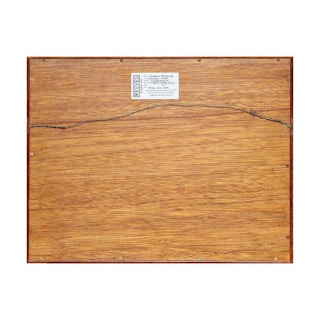Material
Woodcut
About
Beautiful print of Utagawa Hiroshige's "Hirame & Mebaru Fish with Cherry Blossoms" from his famous ukiyo-e Japanese woodblock series Uozukushi in which he endeavored to depict every kind of fish. This print is in the yoko-e, or horizontal orientation, and measures close to the standard dimensions of the oban format. The original images were produced in the 1840s.
Artist Biography
Born in Edo as Tokutaro Ando, Hiroshige grew up in a minor samurai family. His father belonged to the firefighting force assigned to Edo Castle. It is here that Hiroshige was given his first exposure to art: legend has it that a fellow fireman tutored him in the Kano school of painting, though Hiroshige’s first official teacher was Rinsai. Though Hiroshige tried to join Utagawa Toyokuni’s studio, he was turned away. In 1811, young Hiroshige entered an apprenticeship with the celebrated Utagawa Toyohiro. After only a year, he was bestowed with the artist name Hiroshige. He soon gave up his role in the fire department to focus entirely on painting and print design. During this time he studied painting, intrigued by the Shijo school. Hiroshige’s artistic genius went largely unnoticed until 1832. In Hiroshige’s groundbreaking series, The 53 Stations of the Tokaido (1832-1833), Hiroshige captured the journey along the Tokaido road, the highway connecting Edo to Kyoto, the imperial capital. With the Tokugawa Shogunate relaxing centuries of age-old restrictions on travel, urban populations embraced travel art and Hiroshige became one of the most prominent and successful ukiyo-e artists. He also produced kacho-e (bird-and-flower pictures) to enormous success. In 1858, at the age of 61, he passed away as a result of the Edo cholera epidemic. Hiroshige’s prints continue to convey the beauty of Japan and provide insight into the everyday life of its citizens. The appeal of his tender, lyrical landscapes was not restricted to the Japanese audience. Hiroshige’s work had a profound influence on the Impressionists and Post-Impressionists of Europe: Toulouse-Lautrec was fascinated with Hiroshige’s daring diagonal compositions and inventive use of perspective, Van Gogh literally copied two prints from Hiroshige’s famed series, 100 Famous Views of Edo in oil paint.
Dimensions With Frame
H 15.25 in. x W 19.25 in. x D 1 in.
Dimensions Without Frame
H 9.5 in. x W 13.5 in.

